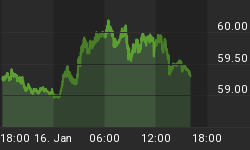Both the WGC and LBMA published outlooks for the global economy and gold market in 2019. Who is right?
WGC’s Outlook for Gold in 2019
Let’s start from the World Gold Council (WGC) which published its 2019 outlook on January 10th. As befits the organization representing the industry’s interests, the WGC is bullish on gold prices. No surprises here. According to the institution, the following trends will mainly shape the gold market in 2019: financial market instability, monetary policy and the US dollar, and structural economic reforms.
First, the WGC expects higher levels of risk and uncertainty this year, due to the elevated market volatility, rising political and economic instability in Europe (think about Brexit, social unrest in France, a populist government in Italy, or secessionism in Spain), and potentially higher inflation from protectionist policies. All these factors are said to increase the likelihood of a global recession, nudging investors toward gold as an effective portfolio diversifier and a safe haven.
Second, the WGC admits that, although market risk will likely remain high, higher interest rates and US dollar’s strength could limit gold’s upside. However, the organization believes that the greenback may be losing steam, while the positive effect of higher federal funds rate on the dollar will diminish as the Fed’s monetary policy stance becomes neutral. Related: Tech Giants Lead Renewable Push
Third, the WGC argues that pro-growth economic reforms implemented in India and China would support consumer demand and, thus, gold prices. This claim is the weakest – and we refuted many times the argument that consumer demand drives the gold prices. Actually, the opposite is true, i.e., consumers are price-takers, not price setters.
However, we could sign under the previous two points. We also believe that the dollar’s upside is limited, while the pace of Fed’s tightening is slowing down. And we do agree that the level of political and market risks is somewhat higher than last year, although we would not overestimate Europe’s weakness. Despite its fragility, it still grows.
LBMA’s Global Macroeconomic Outlook for 2019-2020
Let’s move on now to the LBMA’s outlook. Actually, the presented view was not formulated by the London Bullion Market Association, but by Adam Posen, President of the Peterson Institute for International Economics, whose keynote speech from the LBMA/LPPM conference in Boston on 28-30th October 2018, was published in the recent issue of the Alchemist (we will analyze other articles in the next edition of the Gold News Monitor). According to him, there are four key trends to keep in mind for the coming two years: a shift from financial risk to political risk, the reinforcement of a long-term negative productivity trend, the increasing risk of inflation, and economic and political turmoil in Latin America.
First, the author argues that the US turns isolationist and nationalist, which lowers the political stability all around the world. The uncertainty is higher, while investment subdued. We agree with that.
Related: Silver Demand Set To Grow Significantly In 2019
Second, the current protectionism and anti-investment politics will aggravate the problem of sluggish productivity growth. It’s important not only because it implies slower economic growth, but also because the economy has less room to run hot (there is not fast technological progress which could counterbalance the inflationary pressure).
Hence, and this is the third point, we have an inflation risk which could materialize in the second half of the year, forcing the Fed to more aggressive actions. So far, inflation has been limited, but the upward risk exists certainly.
Fourth, although the Fed’s tightening cycle will not put all emerging markets into trouble, Latin America is particularly at risk (think about the economic disaster in Venezuela, immigration crisis in Columbia, or many questions marks regarding Bolsonaro’s Brazil).
Taking all these factors into account, Posen is bullish on gold, arguing that overall political-economic framework will be at the margin pushing up values for gold:
A more politically uncertain environment incentives people to hold their assets in non-currency assets. A more inflationary environment, even one not hugely inflationary but one with more upside risk to inflation, is something that incentivizes people to move into gold and other precious metals. A more politically fragmented system where the risk of large currency swings is high further reinforcing this. A low productivity growth environment is one that reduces the relative gains of taking speculative risk in other forms of investment, which should also move you towards gold.
Implications for Gold
Ladies and Gentlemen, we have a draw. Both the WGC and LBMA Alchemist’s article by Posen present convincing arguments that fundamentals are moving in the direction of gold. Although we question some of the details, we agree with the general outlook for the gold market in 2019. This year might be indeed better for the yellow metal than in 2018. We do not expect a global recession and a rally in gold prices, but we do expect that 2019 will be more supportive for the gold prices at the margin.
By Arkadiusz Sieron via Sunshine Profits

















